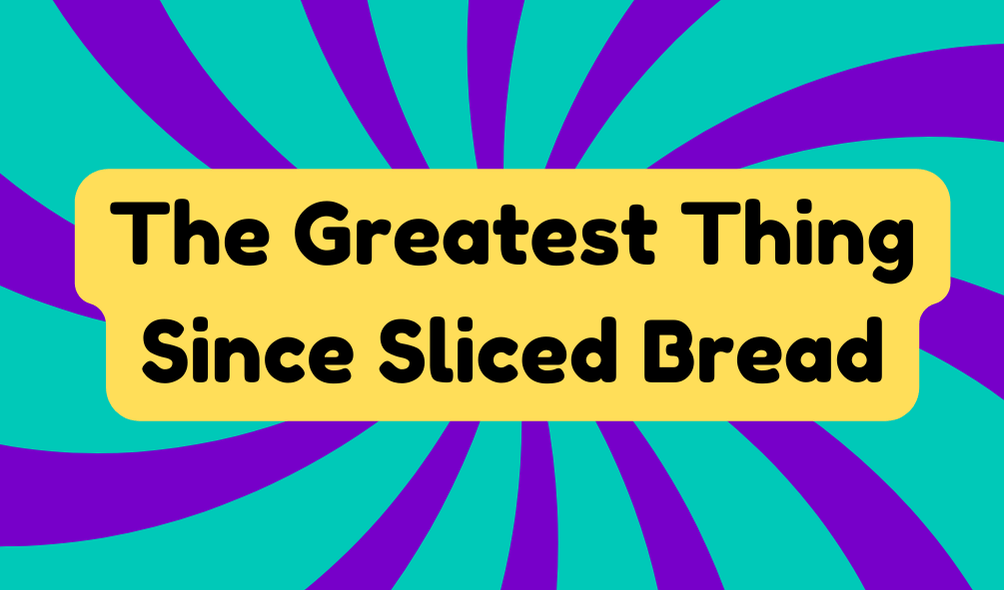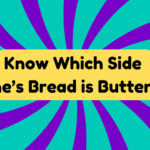The phrase "the greatest thing since sliced bread" is often used to describe remarkable innovations. It stems from the introduction of the first automatic bread-slicing machine in 1928. This benchmark reflects society's appreciation for advancements that enhance daily life. However, its relevance can feel limited in a world teeming with groundbreaking technologies and ideas. This expression serves as both a celebration and a prompt for critical thinking about genuine progress. Exploring its impact reveals more about our expectations of innovation.
Synonyms
When people seek alternatives to the phrase "the greatest thing since sliced bread," they often turn to several synonyms that convey a similar sense of superiority or excellence.
These idiomatic expressions are particularly relevant in discussions about bread innovations and their impact on society. The following options present notable alternatives:
- The best thing since the wheel.
- A game changer.
- The pinnacle of progress.
- Revolutionary breakthrough.
While these expressions enhance conversations, it is crucial to recognize their limitations; not every innovation achieves the remarkable status suggested.
This awareness encourages a more analytical approach to appreciating advancements, beyond superficial accolades.
Example of Sentences
The use of the expression "the greatest thing since sliced bread" can often spark curiosity about its practical application in everyday language.
It serves as a striking benchmark for sliced innovations and superior comparisons that illustrate excellence.
Consider these examples:
- "This new smartphone has features that make it the greatest thing since sliced bread."
- "The latest electric car promises efficiency like never before—truly a superior comparison."
- "Her algorithm is considered the greatest thing since sliced bread in tech circles."
- "This innovative teaching method is the greatest thing since sliced bread for modern classrooms."
Such phrases highlight the desire for remarkable advancements in today's world.
Origin
The origins of the phrase "the greatest thing since sliced bread" are somewhat elusive, much like the actual significance it carries.
Its historical significance dates back to 1928 when Otto Frederick Rohwedder invented the first automatic bread-slicing machine. This innovation marked a shift in food preparation, but attributing greatness solely to this milestone may require a broader lens.
The phrase reflects cultural impact, positioning sliced bread as a benchmark for excellence in convenience. However, in a world filled with advancements, one must question whether this expression genuinely encompasses the vast domain of innovation that has transformed daily life since then.
Collocations
Collocations surrounding the phrase "the greatest thing since sliced bread" reveal its common use in various contexts to highlight superiority or innovation.
Often invoked in discussions about bread innovations, this expression serves as a cultural benchmark for evaluating excellence. While it underscores significant advancements, it also prompts skepticism about overstatements in praise.
- Revolutionary technology
- Groundbreaking product designs
- Innovative culinary trends
- Extraordinary lifestyle choices
These phrases illustrate how "the greatest thing since sliced bread" emerges in cultural comparisons, raising questions about the true value and impact of claimed innovations.
Not every new idea can truly measure up.
How to Use in Everyday Language
Using the expression "the greatest thing since sliced bread" in everyday conversation can add a touch of humor or emphasis to discussions about new inventions or experiences. This idiom has modern usage in varied contexts, often highlighting perceived excellence.
| Everyday Phrase | Contexts of Usage |
|---|---|
| Greatest thing since sliced bread | Innovative products |
| A game-changer | Revolutionary concepts |
| Unprecedented | Unique experiences |
| Next-level | Outstanding qualities |
Though frequently used, critical reflection on its appropriateness in a conversation is warranted, as it can sometimes trivialize genuine achievements.
Why Is It Still Relevant Today?
Expressions like "the greatest thing since sliced bread" maintain their relevance today because they capture the public's fascination with innovation and the constant quest for improvement in everyday life.
This idiom continues to hold cultural significance as it serves as a yardstick for modern analogies, comparing new inventions and advancements to a groundbreaking moment in history. In a world of rapid technological change, such expressions remind society of its penchant for novelty.
Nevertheless, while celebrating innovation, one must remain critical; not every new idea or product merits such praise, prompting a thoughtful examination of true progress versus mere novelty.
Closing Thoughts
In examining the phrase "the greatest thing since sliced bread," one may coincidentally notice its persistent application in discussions about advancements, ranging from technology to everyday conveniences. While it symbolizes a standard of excellence, it also invites scrutiny. Are these modern marvels truly revolutionary, or simply well-marketed items? This phrase, rooted in a significant historical moment, now serves not just as praise but also as a reminder to critically assess what truly warrants such high acclaim.







